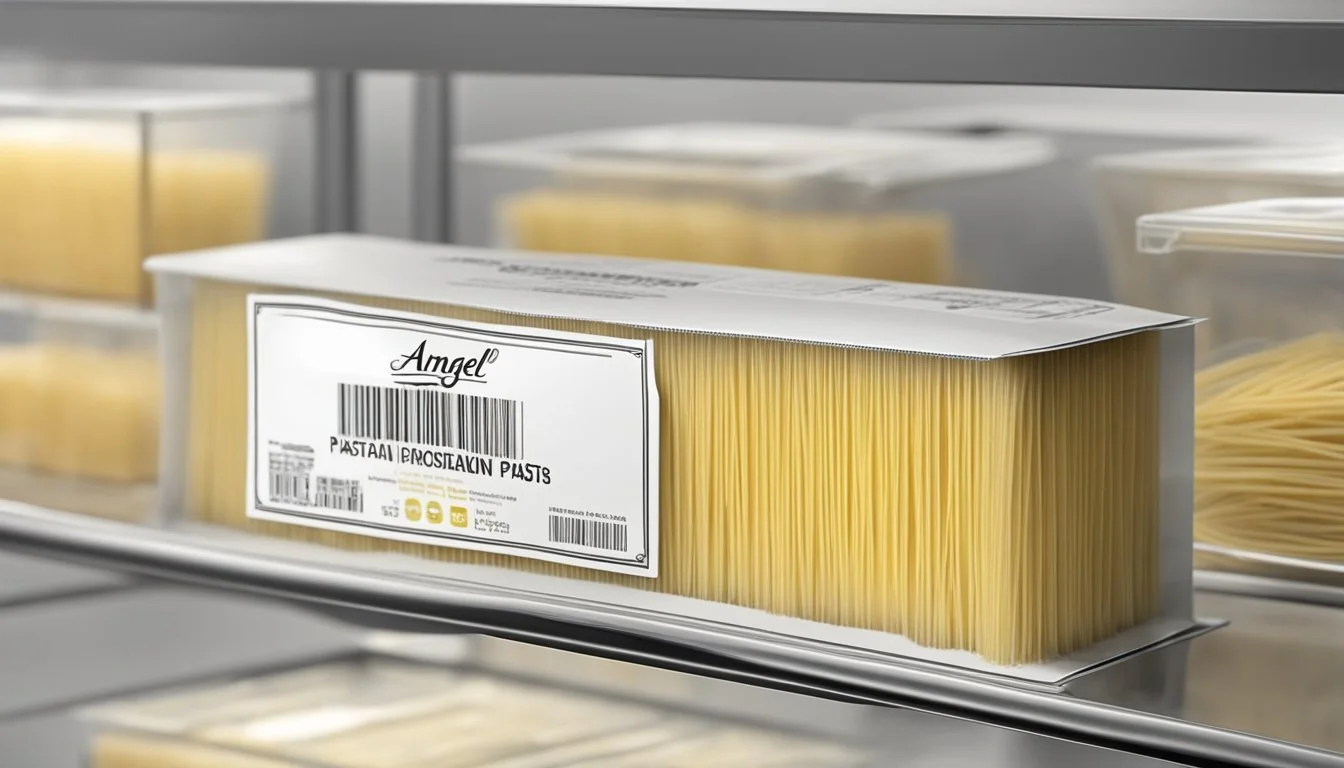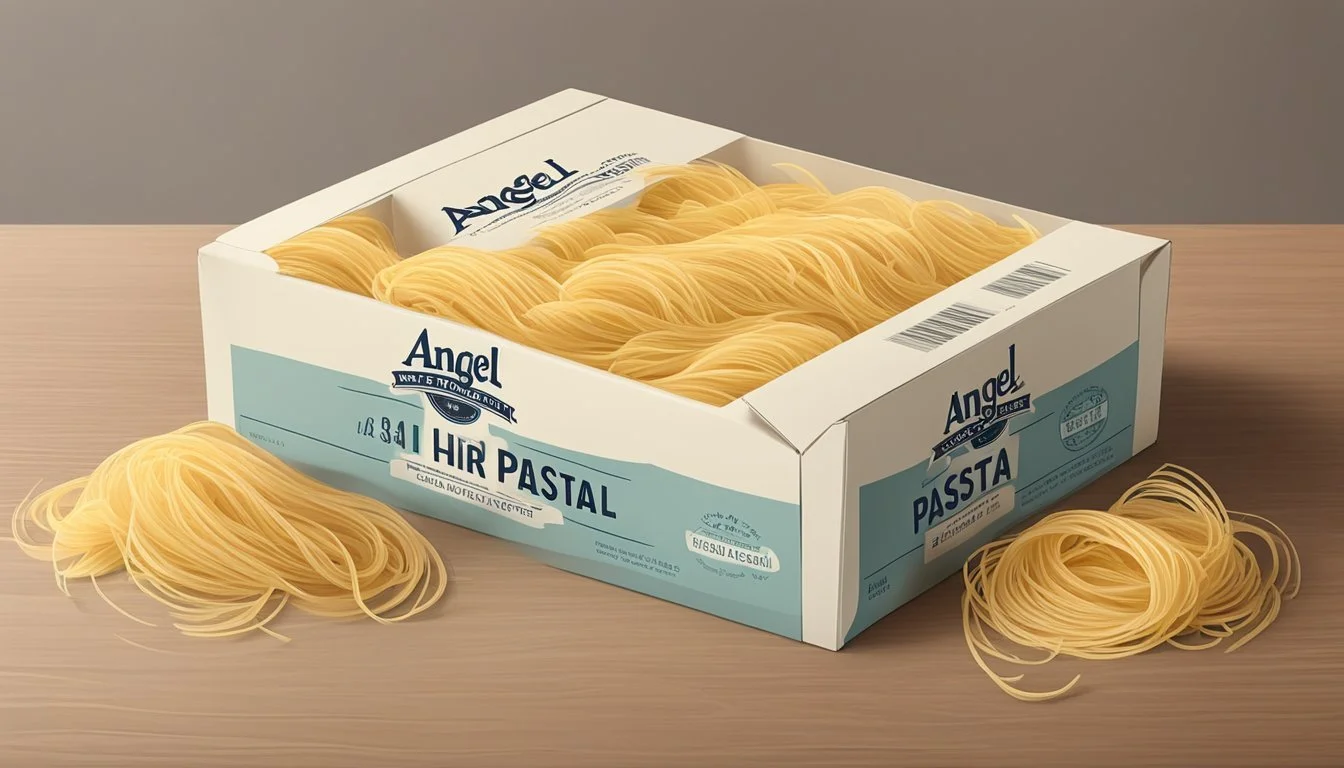How Long Does Angel Hair Pasta Last?
Shelf Life and Storage Tips
Angel hair pasta, with its fine strands and delicate texture, is a popular choice among pasta (What wine goes well with pasta?) enthusiasts. When it comes to storage and shelf life, dry angel hair pasta has a considerable lifespan. If stored correctly in a cool, dry place, a package of dry angel hair pasta can maintain its quality for about three years. However, for the best taste and texture, it is generally recommended to use the pasta within one to two years of the best before date marked on the package.
Once the angel hair pasta is cooked, the shelf life decreases significantly. To preserve its quality, cooked angel hair pasta should be refrigerated within two hours of cooking. In the fridge, it can last for 3 to 5 days when stored promptly and properly in an airtight container. Freezing cooked angel hair pasta extends its usability, allowing it to last for 1 to 2 months without significant quality loss, although the texture may be slightly altered upon thawing and reheating.
Maintaining the quality of angel hair pasta is largely linked to proper storage practices. Dry pasta should be kept in a tightly sealed package to prevent exposure to air and moisture, which can lead to deterioration. Cooked pasta benefits from being coated lightly with oil before storing to prevent sticking. The prevention of sticking enhances both the quality and the ease of reheating for future meals, ensuring that the angel hair pasta remains a convenient and enjoyable option.
Assessing Pasta Quality
When evaluating the shelf life of angel hair pasta, it is crucial to assess its quality meticulously. One should conduct a thorough inspection that involves visual clues, smell, and texture to ensure the pasta is fit for consumption.
Visual Inspection
Observers should begin by examining the color and appearance of the angel hair pasta. It should maintain a uniform, pale yellow or light golden color. Any discoloration or signs of mold—often appearing as green, black, or white spots—would indicate spoilage, and the pasta should be discarded.
Olfactory Check
A proper assessment involves a sniff test—pasta should not emit any off odors. An off smell is a clear indication of spoilage, and such pasta should not be used.
Texture Assessment
The texture of the pasta is telling; it should feel firm to the touch. If the pasta feels excessively mushy or clumps together, it may suggest overcooked pasta or poor quality. Good quality dried angel hair pasta, when cooked, should be al dente—firm, yet tender.
By adhering to these assessment methods, one can confidently determine the quality of angel hair pasta and decide if it remains suitable for culinary use.
Storage Fundamentals
Preserving the quality of angel hair pasta hinges on proper storage techniques. Maintaining the right environment keeps pasta close to its original state, extending its shelf life while preserving flavor and texture.
Airtight Containers
For dry angel hair pasta, an airtight container is essential. When pasta is exposed to air, it can absorb moisture and odors, leading to a decline in quality. An airtight container ensures a cool, dry environment that mitigates these risks, ideally prolonging its shelf life to roughly three years at room temperature.
Room Temperature Storage
Storing angel hair pasta at room temperature is suitable as long as it's kept in a cool, dry place away from direct sunlight. Dry pasta should maintain its quality when stored properly, and the original packaging can suffice if sealed correctly after opening. However, once opened, transferring it to an airtight container can provide an extra layer of protection.
Refrigeration Techniques
For leftover or cooked angel hair pasta, refrigeration is the best approach to extend freshness. They should initially be cooled down to room temperature to prevent condensation inside the container, which could lead to sogginess. Then, storing them in a sealed airtight container or a plastic bag can keep them fresh for 3 to 5 days in the fridge.
Freezer Storage Solutions
When freezing angel hair pasta, both cooked and uncooked pasta can be stored in freezer-safe airtight containers or plastic bags. Dry pasta can last indefinitely, although the best quality is maintained for roughly two years. Cooked pasta can be frozen to extend its shelf life; however, upon thawing, the pasta should be consumed quickly, as repeated temperature changes can affect its quality.
Cooking Instructions
In preparing angel hair pasta, chefs maintain a keen attention to the boiling process, the pasta's texture, and flavorful sauces. Precision ensures a delightful result.
Boiling Basics
To begin cooking angel hair pasta, one must start with a large pot of water to allow sufficient space for the pasta to cook evenly. For 1 pound of pasta, approximately 4-6 quarts of water are recommended. The water should be brought to a rolling boil over high heat, with a generous amount of salt—half a tablespoon or to taste—assuring well-seasoned pasta. It is a common misconception to add oil to the water; however, this is unnecessary and can prevent sauce from adhering to the pasta later on.
Achieving Al Dente
Angel hair pasta, known for its thin strands, cooks quickly and should be monitored closely to achieve an al dente texture. This implies the pasta is cooked to be firm to the bite. Testing a strand after about 3-5 minutes of boiling is typically sufficient to evaluate its doneness. Once al dente, the pasta should be swiftly drained and, if not mixed with sauce immediately, it can optionally be rinsed to prevent sticking.
Sauces and Flavoring
A variety of sauces complement the delicate nature of angel hair pasta. Traditional options include:
Tomato-based sauces, which offer a classic, robust flavor
Pesto, perfect for a more herby and fresh profile
Cream or cheese sauces, providing a rich and decadent experience
Simple dressings like butter, garlic, or olive oil, for a light touch
When adding sauce, one should toss the pasta gently but thoroughly to ensure even distribution of flavor. The sauce should be heated separately and ready as soon as the pasta finishes cooking, as the angel hair pasta is best served immediately after boiling and draining.
Recipe Suggestions
When incorporating angel hair pasta into dishes, one has the option to go for quick and easy meals that are perfect for a weeknight dinner, or to explore advanced pasta creations that are ideal for those who enjoy spending more time crafting a meal.
Quick and Easy Meals
The beauty of angel hair pasta is its quick cooking time, making it an excellent choice for rapid meals. A classic Aglio e Olio is a simple yet flavorful dish where garlic is sautéed in olive oil and tossed with the pasta, often garnished with parsley and optionally, a sprinkle of Parmesan cheese. For a refreshing side, Tomato Basil Pasta Salad can be put together by mixing fresh tomatoes, slivers of basil, olive oil, and garlic into the pasta for a light and easy dish.
Garlic and Olive Oil: Sauté garlic until golden, toss with pasta, and finish with olive oil and parsley.
Tomato Basil Salad: Combine diced tomatoes, fresh basil, and cooked pasta with a vinaigrette.
Advanced Pasta Creations
For those wanting to delve into more sophisticated dishes, angel hair pasta serves as a delicate foundation for a bounty of ingredients. A Creamy Pesto Chicken Pasta elevates the dish with a rich, homemade pesto sauce (how long does pesto sauce last?) and tender chunks of chicken breast. Seafood lovers may indulge in Shrimp (What wine goes well with shrimp?) and Tomato Pasta, which features succulent shrimp, bright cherry tomatoes, and a hint of garlic.
Pesto Chicken: Cook chicken pieces and mix with a home-prepared pesto sauce. Combine with pasta for an Italian-inspired meal.
Shrimp and Tomato: Sauté shrimp with cherry tomatoes and garlic, then coat the pasta in this vibrant mix for a seafood delight.
Angel hair pasta adapts well to different additions, from hearty meats to delicate vegetables. It can serve as the star in a wide array of recipes, accommodating tastes ranging from traditional Italian pasta dishes to inventive modern dinners.
Preserving Leftovers
Proper storage techniques ensure the longevity and quality of leftover angel hair pasta. It is crucial to store it correctly to maintain its texture and flavor.
Refrigerating Cooked Pasta
One should refrigerate leftover cooked angel hair pasta in an airtight container to prevent the absorption of odors and moisture from the refrigerator. To maximize freshness, leftovers should be stored within two hours of cooking. In the refrigerator, the pasta can maintain quality for about 3 to 5 days.
Storing method:
Transfer to an airtight container promptly.
Refrigerate at 40°F or below.
Freezing for Longevity
For longer storage periods, one can freeze cooked angel hair pasta. Freezing can extend the shelf life for 1 to 2 months. To freeze pasta effectively:
Preparation before freezing:
Toss with a small amount of oil (1 tablespoon per 8 ounces of pasta).
Place in freezer bags or airtight containers.
Storage conditions:
Keep at 0°F or below in the freezer.
Reheating Best Practices
When reheating leftovers, it is recommended to add a small amount of liquid, such as water or sauce, to retain moisture and prevent the pasta from drying out. Angel hair pasta can be reheated in the microwave or on the stove.
Microwave:
Cover the pasta to avoid splatter.
Use a microwave-safe container.
Stove:
Heat in a saucepan with the added liquid.
Stir occasionally to promote even heating.
Preventing Pasta Problems
Ensuring ideal texture and flavor when preparing angel hair pasta involves managing stickiness, cooking time, and moisture levels. Employing these measures effectively can result in perfect pasta every time.
Avoiding Stickiness
Cooking Oil: A light drizzle of olive oil or avocado oil in the boiling water can help keep the noodles separate. The oil serves as a barrier that reduces the stickiness of the pasta.
Rinsing: After draining, a quick rinse with cold water washes away excess starch, which also prevents the angel hair pasta from clumping together.
Controlling Cooking Time
Timing: Angel hair pasta should be cooked al dente to retain texture. Angel hair pasta typically cooks within 4 to 5 minutes. Overcooking leads to mushiness, which negatively affects both taste and consistency.
Best Practice: Constantly tasting a few noodles starting at the four-minute mark will help in assessing doneness, ensuring the noodles are not overcooked.
Dealing with Dryness and Sogginess
Storage: For dry angel hair pasta, storing in a cool, dry place extends its shelf-life, generally lasting up to two years past the printed date. For optimal quality, it's best to use the pasta within six to twelve months of purchase.
Reheating Cooked Pasta: When reheating refrigerated angel hair pasta, tossing it in a pan with a bit of olive oil helps to revive the pasta without making it soggy. Cooked pasta kept refrigerated should be consumed within 5 days.







